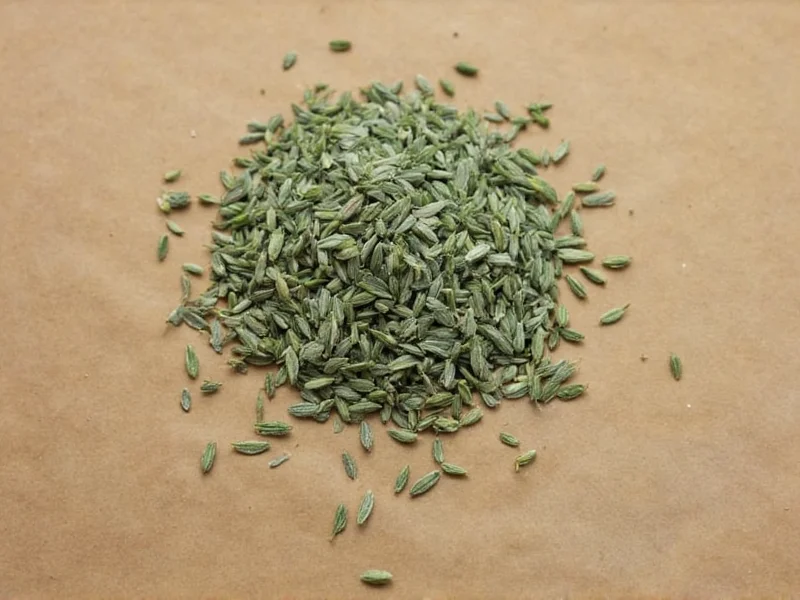1 tablespoon fresh sage equals 1 teaspoon dried sage. This 3:1 conversion ratio exists because dried herbs are more concentrated after moisture removal. Always start with less dried sage and adjust to taste, as potency varies based on storage conditions and age.
Converting fresh herbs to dried measurements is a common kitchen challenge that can make or break your recipe. When substituting dried sage for fresh, understanding the exact fresh sage to dried conversion ratio ensures your dishes maintain proper flavor balance without becoming overpowering.
Why the 3:1 Conversion Ratio Matters
Sage loses approximately 70-85% of its weight during the drying process, concentrating its essential oils and flavor compounds. This concentration explains why 1 tablespoon fresh sage to dried requires only one-third the volume. Dried sage typically contains three times the flavor intensity of its fresh counterpart.
Professional chefs and experienced home cooks rely on this standard conversion ratio for recipe accuracy. However, several factors can affect the precise substitution:
- Age of dried sage (older = less potent)
- Storage conditions (light and air degrade potency)
- Drying method (oven-dried vs. air-dried)
- Specific sage variety (common vs. Russian sage)
Herb Conversion Reference Guide
| Herb Type | Fresh Measurement | Dried Measurement | Special Considerations |
|---|---|---|---|
| Sage | 1 tablespoon | 1 teaspoon | Strongest when rubbed between fingers before use |
| Basil | 1 tablespoon | 1 teaspoon | Add dried basil early in cooking |
| Oregano | 1 tablespoon | 1 teaspoon | Dried oregano intensifies during cooking |
| Rosemary | 1 tablespoon | 1.5 teaspoons | Most potent dried herb; use sparingly |
| Thyme | 1 tablespoon | 1 teaspoon | Fresh thyme has more delicate flavor |
Practical Application in Recipes
When substituting dried sage for fresh in recipes, follow these professional techniques:
- Start with less - Use ¾ teaspoon dried sage instead of 1 tablespoon fresh, then adjust after cooking
- Bloom dried herbs - Add dried sage to hot oil for 30 seconds before adding other ingredients
- Timing matters - Add dried sage early in cooking to allow flavors to develop
- Rub between fingers - Release essential oils before adding to dishes
For soups, stews, and braises where sage cooks for extended periods, reduce the dried amount by 25% from the standard conversion. In quick-cooking dishes like scrambled eggs or sautéed vegetables, the full 1:3 ratio works best.
Avoiding Common Conversion Mistakes
Many home cooks make these critical errors when converting fresh sage to dried measurements:
- Using equal measurements (1:1 ratio) resulting in overpowering flavor
- Not accounting for dried sage's age (older = less potent)
- Adding dried sage too late in cooking process
- Not properly storing dried herbs, causing potency loss
Store dried sage in an airtight container away from light and heat. Properly stored, it maintains optimal potency for 1-2 years. Test older sage by rubbing and smelling - if the aroma is weak, increase the amount slightly beyond the standard conversion.
When Precision Matters Most
Certain dishes require extra attention to the fresh to dried sage conversion ratio:
- Thanksgiving stuffing - Too much dried sage creates bitterness
- Cheese pairings - Subtle balance needed with delicate cheeses
- Pasta sauces - Overpowering sage masks other flavors
- Cream sauces - Fat content intensifies herb flavors
For critical applications, consider making a small test batch with your converted measurements before preparing the entire dish. This prevents wasted ingredients and ensures perfect seasoning.
Expert Tips for Perfect Sage Substitution
Professional chefs recommend these advanced techniques when using dried sage instead of fresh:
- Create a sage-infused oil with dried sage for more controlled flavor delivery
- Combine dried sage with a pinch of sugar to mellow its sharpness
- Add dried sage to liquid ingredients first to help distribute flavor evenly
- For baked goods, mix dried sage with dry ingredients to prevent clumping
Remember that personal taste preferences vary. Some palates detect sage's bitterness more strongly, requiring slightly less dried sage than the standard conversion. Always taste and adjust as you cook.











 浙公网安备
33010002000092号
浙公网安备
33010002000092号 浙B2-20120091-4
浙B2-20120091-4